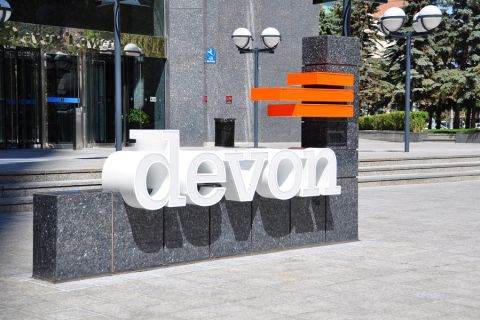A recent field operating-cost study by energy consultant <$iZiff Energy Group > has quantified what many investors long suspected-operating costs jumped sharply last year in western Canada as producers pushed service firms to the max to capture high commodity prices. The report points to third-party processing fees, labor expenses and taxes as areas for possible savings, says Court Mackid, a project manager at Ziff . "People generally feel they can't do anything about [taxes]," he says. "In reality if you're not managing your surface- and mineral-lease taxes correctly, you can end up paying when you don't need to pay." The Calgary firm, which also has an office in Houston, crunched the costs of 226 oil and gas fields in the Western Canadian Sedimentary Basin. The fields had annual production of 103 million barrels of crude and 2 trillion cubic feet of gas. Average oilfield operating costs increased 30% to C$6.10 per barrel of oil equivalent, up from C$4.70 in 1999. For gas fields, the increase was steeper. Operating costs rose 39% to C58 cents per thousand cubic fee equivalent, compared to C$0.42 in 1999. Rising commodity prices, which looked so nice for profits, caused higher electricity and energy costs, which rose 33% for gas fields and 27% for oil reservoirs. The report says cash-rich producers used 2000 to catch up or even move ahead on repairs and maintenance to maximize output. The result was upward pressure on bills from service firms, with totals climbing 20% for gas assets and 35% for oil properties. Perhaps the most surprising statistic: costs for workers and field supervision were the most stable, rising 6% to 18%. Mackid says producers paid more attention to operating costs in 2001 than in the previous year. "Now that commodity prices have decreased, I think you'll start to see a stronger push to lower operating costs." However, rising service costs continue to pressure E&P firms. Calgary-based <$iEnserco Energy Service Co., > for example, says its rental rates increased 23% for service rigs and 26% for drilling rigs in the third quarter, compared with that time period in 2000. While the sources of cost pressures vary over the years, one constant is that bringing them down requires a lot of work, Mackid says. "Savings do not come easy," he explains. "Getting to the problem of what's causing producers high costs, or a cost higher than what they should be paying, is difficult. You don't want to be correcting symptoms, you want to be correcting problems."
Recommended Reading
DXP Enterprises Buys Water Service Company Kappe Associates
2024-02-06 - DXP Enterprise’s purchase of Kappe, a water and wastewater company, adds scale to DXP’s national water management profile.
ARM Energy Sells Minority Stake in Natgas Marketer to Tokyo Gas
2024-02-06 - Tokyo Gas America Ltd. purchased a stake in the new firm, ARM Energy Trading LLC, one of the largest private physical gas marketers in North America.
California Resources Corp., Aera Energy to Combine in $2.1B Merger
2024-02-07 - The announced combination between California Resources and Aera Energy comes one year after Exxon and Shell closed the sale of Aera to a German asset manager for $4 billion.
DNO Acquires Arran Field Stake, Continuing North Sea Expansion
2024-02-06 - DNO will pay $70 million for Arran Field interests held by ONE-Dyas, and up to $5 million in contingency payments if certain operational targets are met.
Report: Devon Energy Targeting Bakken E&P Enerplus for Acquisition
2024-02-08 - The acquisition of Enerplus by Devon would more than double the company’s third-quarter 2023 Williston Basin production.





